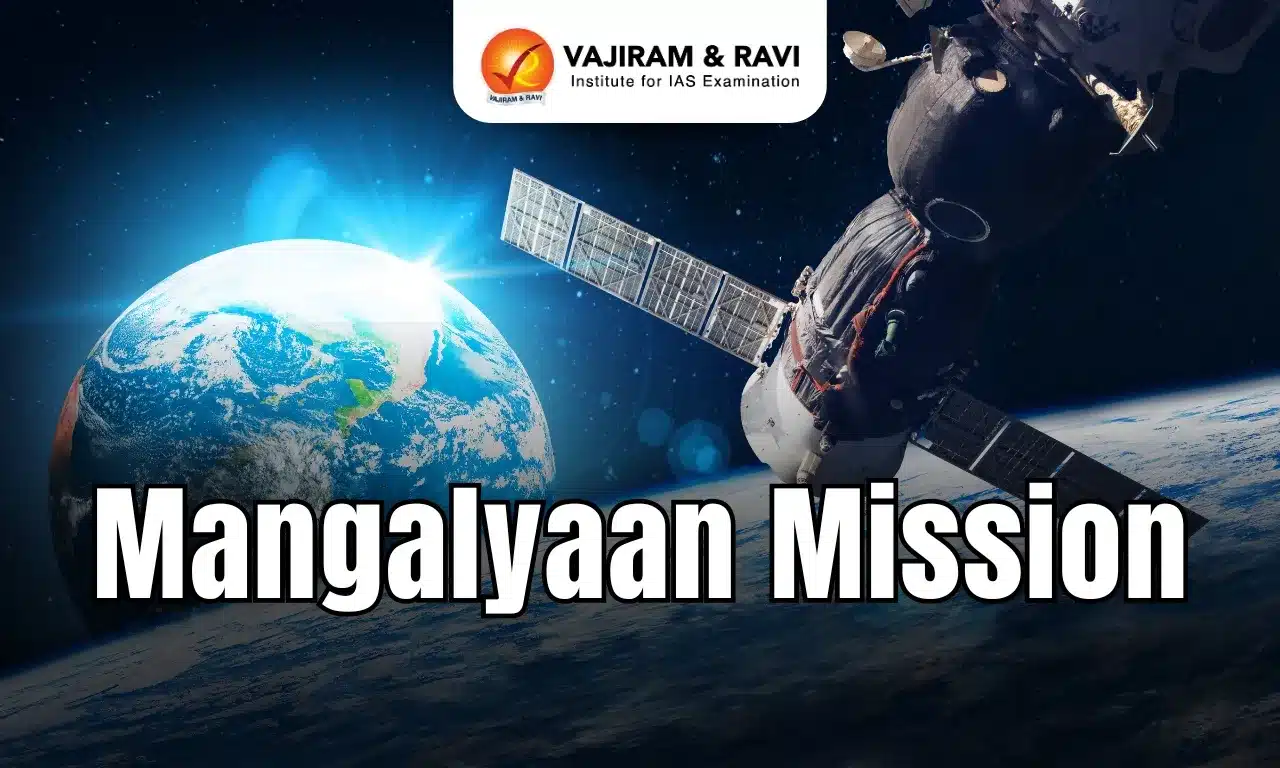India's maiden interplanetary mission, the Mars Orbiter Mission (MOM), also called Mangalyaan, marked a major milestone in its space program. Launched in November 2013 by the Indian Space Research Organisation (ISRO), Mangalyaan created history by successfully entering Mars orbit on its very first attempt.
Key objectives included demonstrating India's capability to reach Mars orbit and conducting scientific studies on Mars' surface features, morphology, minerals and atmosphere. The Mangalyaan mission is considered historic for being India's maiden interplanetary voyage executed in the very first attempt. It put India in an elite club of global space agencies with expertise in Mars exploration.
Mission Mangalyaan - Launch Details and Timeline
The launch and insertion phase required very precise manoeuvres by Mangalyaan involving both terrestrial and deep space navigation over 10 months:
- Mangalyaan was launched aboard a Polar Satellite Launch Vehicle (PSLV C25) rocket from Satish Dhawan Space Centre at Sriharikota, Andhra Pradesh.
- The spacecraft spent over 300 days cruising in deep space before entering Mars orbit on September 24, 2014. This was achieved in the very first attempt - a historic first for any Asian space agency.
- Initially planned as a 6-month mission, MOM completed 8 years in Mars orbit on September 24, 2022 - well beyond its designed mission life.
Parts of the Mangalyaan Mission
After entering orbit, the scientific phase involved Mangalyaan started collecting data through five onboard payloads to study Mars' surface, atmosphere and mineralogy.
- Orbiter:
- Mangalyaan orbiter weighed 1337 kg with a lift-off mass of 1340 kg from Earth.
- It had a cuboid structure with solar panels attached to facilitate power generation.
- Payloads: The orbiter had 5 payloads to conduct scientific studies using multiple instruments. These include:
- Mars Color Camera: To capture images and information about Martian surface features and processes.
- Methane Sensor for Mars: To detect the presence of methane which would provide evidence of Martian life.
- Mars Exospheric Neutral Composition Analyser: To study the composition of the planet's upper atmosphere.
- Thermal Infrared Imaging Spectrometer: To map surface composition and mineralogy of Mars.
- Lyman Alpha Photometer: To measure the relative abundance of deuterium and hydrogen from Lyman-alpha emission in Mars' exosphere.
- Objectives:
- Scientific: Mangalyaan was developed to build deep space exploration capabilities and conduct a study of the Martian surface features, morphology, mineralogy, and the atmosphere as well as to study extraterrestrial life.
- Technological: It aimed to develop, test and validate the state-of-the-art technologies capable of operating with sufficient autonomy in the journey phase of interplanetary travel.
Scientific Findings of Mars Orbiter Mission
During the extended mission phase spanning over 8 years, the MOM payloads have contributed important Martian observations:
- Atmospheric Methane Detection: Methane Sensor for Mars made the first clear detections of Martian methane (a potential indicator of microbial life) in September 2014 raising prospects of potential biological links that warrant deeper investigation to isolate sources.
- Surface Imaging: High-resolution images from the Mars Colour Camera delivered extensive visual data on Martian surface features like craters, valleys, dunes, ice caps and weather systems facilitating a better understanding of surface morphology and dynamics.
- Mineralogical mapping: Thermal Infrared Imaging Spectrometer generated mineral composition maps of Mars surface showing distributions of clay, hematite, silicates etc tied to past aqueous alteration processes providing clues to palaeoclimatic conditions.
- Upper atmospheric insights: MENCA mass spectrometer facilitated precise quantification of the extent of Argon-40 in Mars atmosphere - a tracer isotope giving clues on atmospheric loss to space.
Mission Mangalyaan Challenges and Solutions
Despite meticulous planning, the Mangalyaan mission team also had to overcome key challenges during the long voyage and continuing orbital phase:
- Communication time delay: Earth-Mars distance of 200 to 400 million kilometres implies a one-way radio signal delay of at least 4 to 20 minutes demanding reliance on automated fault detection, diagnosis, and correction capabilities without ground control guidance.
- Propulsion needs: Lack of onboard propulsion system implied trajectories had to be perfectly pre-calculated including factors like slingshot manoeuvres.
- Mid-course corrections were done using short thruster bursts.
- Solar conjunctions: When Mars goes behind the Sun relative to Earth, ionized solar plasma can interfere with signals. So special automated contingency procedures were formulated.
Mission Mangalyaan made core improvements in automation, autonomy and onboard decision-making functions to resolve situations without immediate ground control while advancing deep space communication abilities.
Significance of Mangalyaan Mission
The success of Mangalyaan had wide-ranging impacts on the trajectory of India's space program:
- Mastering Interplanetary Skills: Highly complex coordination to complete manufacture, assembly, integration, testing, launch and spaceflight operations within 18 months reflected robust mission engineering skills.
- Platform for advanced exploration: Operational validations of enhanced spacecraft technologies will lay the foundations for highly capable Mars missions in the 2030s timeframe involving attempting historic landing and roving milestones.
- Boosted priority for space exploration leading to approval of subsequent proposals like Chandrayaan-2, Aditya L1, Shukrayaan-1, etc.
- Spur commercial space activity: The mission's result will highlight the proven reliability of India's space technology for global customers while catalysing both international partnerships and the domestic private space industry.
- Cost reduction: Economically executed mission (4.5bn rupees) using limited engine firings and optimised for fuel, weight etc won international acclaim, contrasted to contemporary NASA MAVEN orbiter's 10 times higher price tag.
- Global leadership: India is staking leadership among developing countries rather than mimicking other agencies in advancing Martian exploration.
- Entry into the elite league of space agencies mastering expertise in Mars travel boosting global standing significantly.
Global Mars Missions
Since the first successful flyby in 1965, several space agencies have successfully made it to Mars such as:-
| Mission Name | Key Highlights | Current Status |
| Mars Express- European Space Agency (2003) | - The first European mission to Mars; found evidence of methane and ammonia | - Operational since 2004, extended until the end of 2022 |
| Curiosity-NASA (2011) | - Rover analysed geology & climate; and found evidence ancient lakes could have supported life | - Active and mobile on Mars |
| MAVEN- NASA (2013) | - Orbits Mars studying atmosphere & climate history | - Operational, has helped relay data from rovers |
| ExoMars Trace Gas Orbiter - European Space Agency/Russia (2016) | - Studies atmospheric gases like methane; relays data from rovers | - Operational at Mars, has detected 'unusually high' methane levels |
| InSight lander- NASA (2018) | - Geology mission assessing seismic activity on Mars | - Operational on Mars surface, has recorded over 500 marsquakes so far |
| Hope Mars Mission- United Arab Emirates (2020) | - First interplanetary mission by Arab country; atmospheric studies | - Successfully entered Mars orbit in 2021 |
| Tianwen-1- China (2020) | - China's first independent Mars mission containing orbiter, lander and rover | - Rover Zhurong operational on Mars surface after 2021 landing |
| Mars 2020 - Perseverance Rover- NASA (2020) | - Seeks ancient signs of life; carrying Ingenuity helicopter drone | - Operational on Mars; has recorded archaeological sites, Ingenuity completed flights |
Mangalyaan 2
The Mangalyaan-2 mission is set to explore Mars and will carry four payloads to study various aspects of the red planet. These payloads include-
- The Mars Orbit Dust Experiment (MODEX),
- Radio Occultation (RO) experiment,
- Energetic Ion Spectrometer (EIS), and
- Langmuir Probe and Electric Field Experiment (LPEX).
The study will focus on the Martian atmosphere, environment, and interplanetary dust.
Last updated on December, 2025
→ Check out the latest UPSC Syllabus 2026 here.
→ Join Vajiram & Ravi’s Interview Guidance Programme for expert help to crack your final UPSC stage.
→ UPSC Mains Result 2025 is now out.
→ UPSC Notification 2026 is scheduled to be released on January 14, 2026.
→ UPSC Calendar 2026 is released on 15th May, 2025.
→ The UPSC Vacancy 2025 were released 1129, out of which 979 were for UPSC CSE and remaining 150 are for UPSC IFoS.
→ UPSC Prelims 2026 will be conducted on 24th May, 2026 & UPSC Mains 2026 will be conducted on 21st August 2026.
→ The UPSC Selection Process is of 3 stages-Prelims, Mains and Interview.
→ UPSC Result 2024 is released with latest UPSC Marksheet 2024. Check Now!
→ UPSC Prelims Result 2025 is out now for the CSE held on 25 May 2025.
→ UPSC Toppers List 2024 is released now. Shakti Dubey is UPSC AIR 1 2024 Topper.
→ UPSC Prelims Question Paper 2025 and Unofficial Prelims Answer Key 2025 are available now.
→ UPSC Mains Question Paper 2025 is out for Essay, GS 1, 2, 3 & GS 4.
→ UPSC Mains Indian Language Question Paper 2025 is now out.
→ UPSC Mains Optional Question Paper 2025 is now out.
→ Also check Best IAS Coaching in Delhi
Mangalyaan Mission FAQs
Q1. When was the Mangalyaan Mars Orbiter launched by ISRO?+
Q2. How long did the Mangalyaan take to reach Mars?+
Q3. Which was the first Asian nation to successfully place a Mars Orbiter?+
Q4. Does India plan follow-up Mars Missions?+
Tags: mangalyaan mission quest



















